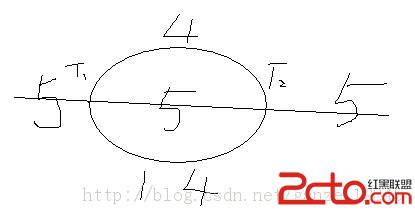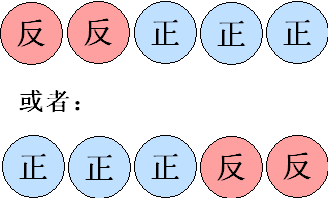boost库的使用_tuple
tuple的使用
一 Boost::tuple
很多的时候我们经常需要为我们的函数返回多个值,一般的做法是通过传入非常量的指针或引用,但是这样的话可能可读性就要差一些,使用者可能需要确切的文档才能确定到底哪个是返回值,为了更好的可读性,我们可以使用class或struct来封装我们要返回的多个值,然后返回封装struct或class,但是使用这种方法的弊端就是增加的程序的代码量,最好的解决办法其实我们可以通过一种匿名的struct或class来解决这个问题。
Boost::tuple就为我们提供了一种类似于匿名struct的方法为我们解决函数的多个返回值的问题。既增强了代码的可读性有不增加代码量。其实在STL中已经有这样的特例,std::pair其实就是boost::tuple的2个参数的特例,对boost::tuple你可以绑定更多的参数,或者你可以迭代实现无限多参数的情况。
二 源码剖析
头文件: "boost/tuple/tuple.hpp",它包含了 tuple 类模板及库的核心部分。
头文件: "boost/tuple/tuple_io.hpp",包含了对 tuple 的输入输出操作符。
头文件: "boost/tuple/tuple_comparison.hpp",包含了 tuple 的关系操作符。
为了方便使用,Tuple 库中有些名字位于名字空间 boost:如 tuple, make_tuple, tie, 和 get.
函数说明:
1)构造函数
2)拷贝构造函数
3)t.get<N>()或get<N>(t) ,取得第N个值
4)make_tuple ,生成tuple
5)tie , 生成都是ref的tuple
6) 重载比较运算符 ,可以直接用来比较
7)重载输入输出运算符 ,可以直接使用IO
8)get_head()和get_tail()函数,用来取得值
9)length<>和element<>用来得到tuple的size和第N个的值类型
10)如果使用boost::TR1,则还可以使用std::tr1::tuple_size(),std::tr1::tuple_element(),分别用来得到tuple的size和第N个值的类型。
三 实例
1)tuple的构造,拷贝构造函数,get成员函数,get全局函数,make_tuple全局函数。
#include <string>
#include <iostream>
#include "boost/tuple/tuple.hpp"
boost::tuples::tuple<int,double> get_values()
{
return boost::make_tuple(6,12.0);
}
class base
{
public:
virtual ~base() {};
virtual void test()
{
std::cout << "base::test() ";
}
};
class derived : public base
{
public:
virtual void test() { std::cout << "derived::test() "; }
};
void main()
{
// test for constructor
boost::tuple<int,double,std::string> triple(42,3.14,"My first tuple!");
boost::tuple<short,int,long> another;
boost::tuple<int,int,double> another2(10);
// test for make_tuple , ref and cref function
int plain=42;
int& ref=plain;
const int& cref=ref;
boost::tuples::tuple<int> plaint(plain);
plaint = boost::make_tuple(plain);
plaint = boost::make_tuple(ref);
plaint = boost::make_tuple(cref);
boost::tuples::tuple<int&> reft(ref);
boost::make_tuple(boost::ref(plain));
boost::make_tuple(boost::ref(ref));
boost::make_tuple(boost::ref(cref));
boost::tuples::tuple<const int&> creft(cref);
boost::make_tuple(boost::cref(plain));
boost::make_tuple(boost::cref(ref));
boost::make_tuple(boost::cref(cref));
// test for get function
boost::tuple<int,double,std::string> triple2(42,3.14,"The amazing tuple!");
int i=boost::tuples::get<0>(triple2);
double d=triple2.get<1>();
std::string s=boost::get<2>(triple2);
// test for function return tuple
boost::tuples::tuple<int,double> value = get_values();
// test for copy constructor
boost::tuple<int,std::string,derived> tup1(-5,"Tuples");
boost::tuple<unsigned int,std::string,base> tup2;
tup2=tup1;
tup2.get<2>().test();
std::cout << "Interesting value: " << tup2.get<0>() << " ";
const boost::tuple<double,std::string,base> tup3(tup2);
//tup3.get<0>()=3.14; // error, because tup3 is const
boost::tuples::tuple<int,int,double> tuple1(10,30,20.000);
int head = tuple1.get_head();
int tailhead = tuple1.get_tail().get_head();
double tail = tuple1.get_tail().get_tail().get_head();
// for TR1
/*boost::tuples::tuple<double, char, int> tuplesize;
std::tr1::tuple_size();
std::tr1::tuple_element();*/
}
2)使用tie函数模版来生成对ref的绑定的tuple,tuple的比较使用,tuple的输入输出:
#include <string>
#include <iostream>
#include <vector>
#include <algorithm>
#include "boost/tuple/tuple.hpp"
#include "boost/tuple/tuple_comparison.hpp"
#include "boost/tuple/tuple_io.hpp"
template <int Index>
class element_less
{
public:
template <typename Tuple>
bool operator()(const Tuple& lhs,const Tuple& rhs) const
{
return boost::get<Index>(lhs)<boost::get<Index>(rhs);
}
};
int main()
{
// Tiers are tuples, where all elements are of non-const reference types.
// They are constructed with a call to the tie function template
int i; char c; double d;
boost::tie(i, c, d) = boost::make_tuple(1,"a", 5.5);
std::cout << i << " " << c << " " << d << std::endl;
// test ignore
char ch;
boost::tie(boost::tuples::ignore, ch) = std::make_pair(1, "a");
std::cout << ch << std::endl;
// test for comparison
boost::tuple<int,std::string> tup1(11,"Match?");
boost::tuple<short,std::string> tup2(12,"Match?");
std::cout << std::boolalpha;
std::cout << "Comparison: tup1 is less than tup2 ";
std::cout << "tup1==tup2: " << (tup1==tup2) << " ";
std::cout << "tup1!=tup2: " << (tup1!=tup2) << " ";
std::cout << "tup1<tup2: &q
补充:软件开发 , C++ ,




